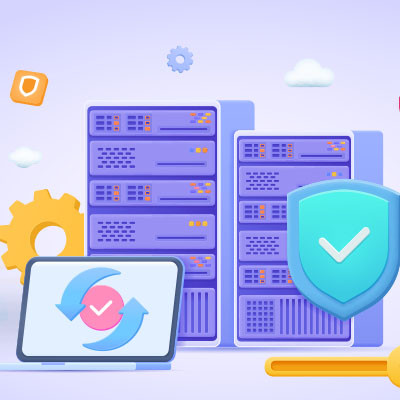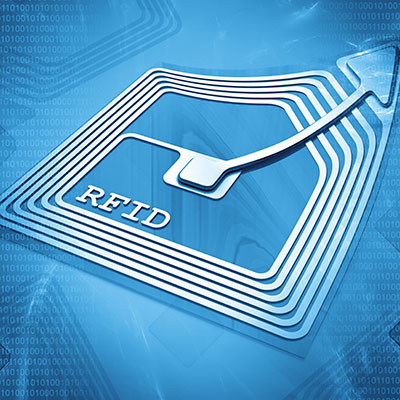IT professionals have all but proclaimed the tape backup system, which dominated the data backup space for decades, to be all but dead. This declaration may have been premature however. Over the past several years, there has been a resurgence in companies that use tape backup. This week, we will go into why businesses are willingly utilizing what can only be described as an antiquated technology for their system redundancy.
k_Street Consulting, LLC Blog
Cybersecurity has become a paramount concern for individuals and organizations alike. With the constant threat of cyberattacks and data breaches, it is crucial to have robust security measures in place. This is where cybersecurity consulting comes into play. Below, we will explore the various ways in which consulting services contribute to enhancing cybersecurity.
Back in July, the White House secured commitments from Amazon, Anthropic, Google, Inflection, Meta, Microsoft, and OpenAI to help manage the risks that artificial intelligence potentially poses. More recently, eight more companies—Adobe, Cohere, IBM, Nvidia, Palantir, Salesforce, Scale AI, and Stability—also pledged to maintain “the development of safe, secure, and trustworthy AI,” as a White House brief reported.
Any business that utilizes technology is sure to accumulate wasted materials over time, whether it’s a drawer full of old chargers or a room full of old, outdated workstations. To make sure that they don’t land themselves in a landfill, you should make a conscious effort to recycle and reuse your old technology in some way. Here are some options to consider.
Scaling your business' technology infrastructure is crucial for sustainable growth. With the right strategies and tools in place, you can effectively optimize your operations and enhance productivity. Let’s delve into key approaches and considerations when it comes to scaling your business' technology.
Let’s talk a little bit about deepfakes. If you aren’t aware of this technology, deepfakes are essentially synthetic media. Typically they come in the form of videos or images that use artificial intelligence (AI) to replace a person’s likeness with another’s. With deepfake technology, people can convince an audience that a person said something they didn’t say. This deliberate digital subterfuge can bring with it a whole lot of problems. This week we will outline a few of them.
When it comes to running a business, it's not a single task but a web of interconnected responsibilities that collectively determine its efficiency. For smaller businesses, this web can feel even more intricate, demanding more from their limited workforce. This month, we want to shed light on the substantial impact that even modest technological investments can have on a business's operations.
It’s an unfortunate fact that cybercriminals are motivated to attack places that contain large volumes of sensitive data, but typically lack the budget or in-house skills to sufficiently protect it. It’s even more unfortunate that this description directly applies to many schools and school systems.
Let’s talk about what schools have to offer cybercriminals, and what they need to do as a result.
We know you don’t need to be reminded that the administrative part of your job is one of the more unpleasant bits, at least one of the more boring parts of your work. One task that is particularly dull is creating different folders for all your employees, projects, and organizational needs. Microsoft Excel, however, makes it much easier to handle this mundane task—and you’ll feel like a pro for using it in this way.
Despite its undeniable value, data is incredibly fragile. The loss of critical information can spell disaster for a company, making data backup a paramount concern. In this article, we'll explore why data backup is so important for businesses and why it should be at the forefront of every organization's IT strategy.
It’s borderline impossible to conduct any business online without seeing potential threats abound. It also doesn’t help that threats tend to disguise themselves to avoid being detected. Today, we want to share a social media threat that one of our employees discovered while going about their day, and we think even a cautious user could have been fooled by it.
The cloud is an amazing tool for just about any business, allowing for countless benefits that span endless possibilities. However, because it involves the Internet and hosting data in an online environment, there are security challenges that naturally come about as a result of utilizing it. Let’s consider some of the security mistakes that businesses can experience while using the cloud.
Microsoft Excel is a powerful tool for organizing and analyzing data, and its ceiling for mastery is incredibly high. Thankfully, you don’t need to know every little thing about Excel to get value out of it, and thanks to built-in features like Auto Filter, you can still get plenty of value out of it even if you’re not a power user. Let’s go over how you can use Auto Filter to more effectively navigate spreadsheets filled with data.
In today’s interconnected world, an organization dedicated to fraud protection like the United States Federal Trade Commission is vital, especially when you consider how advanced digital technology has become and continues to grow. The FTC works to ensure consumer data stays protected by the businesses to which they entrust it. Let’s look at the Safeguards Rule and what your business should know about it.
Many individuals were skeptical about foldable phones when they were first introduced, all thanks to higher prices and stories about how fragile they are. That said, those who have stuck with the concept have contributed to the excitement and built it up to be a legitimate option that actually makes sense.
Windows 10 has been an integral part of many users' digital lives for several years. Microsoft has recently announced the end of support for Windows 10, however, which has raised concerns and questions among its many users. This week, we will delve into the details of Windows 10's end of support, its implications, and what steps you can take to ensure a smooth transition.
Whether we want to admit it or not, the future can be scary, and even the most powerful technology out there is not enough to keep today’s data preserved while it’s in storage. Decades from now, or perhaps even a century, are you confident that your data will be available and ready to use? We’re here today to discuss why you shouldn’t be extremely confident in your hard drives.
Getting the right technology for your business needs isn’t always easy. You may try something that you’ve read about and it doesn’t work out for you. You are then out a lot of money, and your business is left less productive and less efficient. In this month’s newsletter, we thought it would be good to go through some of the tools that can improve your organization's operations.
With the latest version of Windows, Windows 11, users can leverage all manner of great productivity-boosting features to take full advantage of the new technology at their fingertips. Let’s look at some of the features that users of Windows 11 can use to make better use of their time with the operating system.
Gaining efficiencies inside your business can make a world of difference to how it runs, but also how it is viewed by your customers. An efficient business can do more and react much faster than one that is constantly struggling to streamline things. Let’s look at five things you can do to create a more efficient workflow.
For today’s business, there are very few threats that are as pervasive as cyberthreats. For this reason organizations that are willing to invest in their cybersecurity seem to have more control over their data and operations. With cyberthreats constantly evolving and becoming more sophisticated, it is crucial to equip ourselves with the right tools to protect our digital assets. In this week’s blog post, we will explore some of the most important cybersecurity tools that every individual and organization should consider implementing.
You might think that adding additional security measures can only benefit your business, and this is true in most circumstances, save one: security exhaustion. If you don’t make it easy for your employees to adhere to your security policies, then you could inadvertently be making them perform slower than usual and your solutions could be getting in the way of their work.
Technology is more than just a tool for business; it is the business. That’s why it is essential to ensure that your business’ technology works for you and not against you. This is easier said than done. It takes technicians with refined skills from experience working in the field to understand how to keep all the technology your organization relies on working effectively. Let’s take a look at why managed IT services are a huge benefit for any business that relies heavily on technology.
Google Docs has been a worthy competitor to the ubiquitous Microsoft Word since the search engine giant launched the service in 2006. Since then, it’s been used by personal accounts and businesses as a fantastic alternative to the Microsoft Office suite. Google was able to beat Microsoft to the punch with a nearly fully-featured, browser-based document editor that allowed incredibly easy collaboration and sharing capabilities. However, there’s one little hang-up that people often run into when using Google Docs, and we’re going to show you how to overcome it.
Have you ever wanted to put a YouTube video on repeat for an inordinately long amount of time, perhaps looping on a kiosk or on a conference room tv in the background? There are several ways to do this, including a feature built into YouTube itself and third-party websites. Let’s take a look at both options.
Viruses and malware are bad. Ransomware is crippling. Data breaches in some cases can more or less shut down a business. We talk about these threats all the time, but for most people, they are just scary-sounding buzzwords. Today, we want to talk about the more personalized threats that are much more cunning, and in some ways, much more dangerous.
The right collaboration tools can be game-changing for business, but only if they are appropriately configured and integrated with intention into your infrastructure. Today, we are bringing you four common mistakes that businesses make with their collaboration tool security that could hold you back from getting the most from our solutions.
I was thinking about a funny tech support issue I ran into many years ago, and thought it would be fun to share it with everyone. All names have been changed to protect the innocent. If you’ve ever had to spend hours chasing down the root of a problem, only to find that it was the dumbest thing possible, you’ll probably relate to this!
There are challenges that go with running any business. Some of the most common come from unhappy employees. If you understand some of the most common complaints that today’s worker may make, you can proactively ward against them and create a happier and more productive workplace. Let’s take a look at five of the most common employee complaints in today’s workplace and what you can do about them.
Data is what makes your business function, and if you’re not careful, you might find yourself without it due to a hardware failure, malware attack, or even human error. You need to maintain and implement a powerful data backup solution to ensure that your business can bounce back following a disaster, and this platform should keep your data as safe and accessible as possible in the process. Here’s how you can implement such a solution.
Delegation is something that you, as the leader of your organization, need to master in order to get the most efficiency out of yourself and your team. There are various ways to handle delegation, all with their strengths and flaws. We’re here today to help you figure out your own personal management style and how technology can help you carry it out.
We always try to communicate the numerous benefits of managed IT services, but when your business is happy to have their own internal IT department, those benefits tend to look less appealing. For organizations that rely on the expertise of their internal IT staff, they may not think they have a need for—or simply can’t afford—an outside IT presence. This misconception may actually be harming their businesses. Today, we will introduce co-managed IT services, and how they can be leveraged to maximum benefit.
It isn’t uncommon for businesses to engage in actions that seem to directly contradict their own best interests. This is called self-sabotage, and it can be a costly and extremely debilitating phenomenon for a business. Let’s go through some of the actions that may be holding your business back, even if you don’t realize it.
If a business is in operation today, it needs to have preparations in order to protect itself and its data from potential disasters—a fact that has only become more pressing as digital data has become the norm. Let’s take a few moments to go over what today’s businesses need to include in their disaster recovery preparations to ensure that their data remains protected.
Your technology is essential to your business remaining efficient and your employees remaining productive. Unfortunately, this technology will fail at some point. By adopting proactive strategies, businesses can ensure the longevity and smooth functioning of their IT infrastructure. In this blog post, we will explore how proactive management of IT can keep it running longer, resulting in increased efficiency and cost savings.
Your business might depend on technology, but if it’s not managed properly, this dependence can become a detriment. Small businesses in particular must be aware of several challenges specific to their technology infrastructures. Let’s examine three of the most common culprits for your company’s technological troubles and what you can do about them.
In recent years, the Internet of Things (IoT) has emerged as a game-changer across various industries. One way that businesses can utilize these technologies is to understand how their businesses use their utilities as well as automate the control of some of them to cut costs and utilize these resources more efficiently. Let’s look at how businesses are using IoT tools to stabilize utility costs.
Does your business rely on the strength of its information systems? If so, you understand just how important cybersecurity is to the health of your organization. In a near-constant attempt to maintain organizational cybersecurity, many organizations have started changing the way that they approach data and network security, by moving their security efforts to the edge of their network. This is called edge security, and there are some very intriguing benefits.
Businesses that don’t leverage managed services for their technology infrastructure are leaving a lot of money on the table, but it’s not always easy to see until you break down what the solutions really do for you. In isolation, they might not seem valuable, but when combined, they save your business significant amounts of capital.
In business, organizations that are able to automate processes have a leg up on organizations that rely on humans to do everything. Not only does it cost a lot less to run a business that has automated processes, it also helps improve organizational focus and efficiency by streamlining processes and removing the moving parts that can sometimes hinder operational progress. That’s not to say that there aren’t some places that a business can greatly benefit from a human touch. Let’s take a look at both sides of the argument.
Without hardware, where would your business be right now? You can’t run your mission-critical applications and software without devices to host them on. You need to do all you can to ensure it stays in a proper state, but there will always eventually come a time when you cannot sustain it any longer and need to upgrade.
Here’s what you need to know about your hardware refresh cycle, including what it is, what you can do with one, and how to plan it out.
Phishing attacks are the most common attack vector used by hackers, and while it helps to know what a phishing attack looks like, it’s also good to know what they don’t look like. The latest example of a phishing attack takes this to an extreme, utilizing blank messages to confuse recipients in a creative take on phishing attacks.
Android users, you might have noticed that your applications drawer can get cluttered pretty quickly. If you find it difficult to navigate or find the apps you are looking for, then you’ll be relieved to know that you have a couple simple options available to help your navigation be more manageable. You can even go to specific screens within your applications.
If you have never imagined your business in the crosshairs of enemy hackers, you could be in for a rude awakening. Unauthorized access to important business data could be enough to bring your business’ operations grinding to a halt, among other consequences. You need to focus your efforts on security, including protecting your infrastructure and ensuring its redundancy through data backup systems.
Managing your technology infrastructure can be challenging, but virtualized computing presents an opportunity for you to make considerable changes and progress to a more efficient way of doing so. With the right technology and the right solutions, you can break through barriers previously in place and do some remarkable things with virtualized technology.
It’s natural for your mobile device’s battery to drain over time, especially as it gets a bit on the older side, but there are also applications that are notorious for causing faster battery drainage than you might prefer. Today, we’re going to help you identify the problem apps on your devices and provide opportunities to address them.
Businesses have been starting to embrace the Internet of Things (IoT) for quite some time now as they can see the benefit of using devices to streamline parts of their business processes that may not be actively engaging. There is another growing trend in the space that is more sophisticated and could be one of the most transformative technologies in the near future, this is the Industrial Internet of Things (IIoT). This month, we discuss what the IIoT is and how it can be used by certain companies to massive benefit.
The modern business creates and deals with a lot of data, and has for some time. For most of that time, this data has just been ignored, but recent developments in analytics and business intelligence has made this data extremely valuable. In order for your analysts to make accurate determinations they’ll need access to a wide variety of data from a myriad of sources. This is where data warehousing comes in.
Businesses have been put through the wringer over the past couple of years, and for the small business owner, this could have you asking a lot of tough questions. It’s even more stressful because, unlike large enterprises, a lot of the issues are directed at you. This month, we thought we’d take a look at a couple of questions that need to be addressed when going through periods of uncertainty.
Wouldn’t it be great if your business didn’t have to worry about technology problems? Well, with the right amount of attention and care invested, your business can minimize technology issues and optimize your infrastructure for proactive technology management rather than reactive. Let’s go over some of the most important practices.
Finding affordable data storage isn’t the challenge it used to be. In fact, some sources say the costs are dropping by 20-to-30 percent annually. This means that businesses that thought cost was a roadblock to using the cloud for their data storage needs, can rest assured that they can confidently go on and secure the amount of secure cloud storage they need.
For the past few weeks, we have been looking at the idea of procrastination and how it manifests in individuals to directly impact your business. Today, we want to take a closer look at how you can put a halt to procrastination in the short term, as well as how you can further these tactics to create real change over time. We’ll begin with the short-term solutions.
The word “bandwidth” is thrown around a lot in business technology, but what does it really mean? Today, we wanted to cover some of the frequently asked questions business owners have about network bandwidth and what it specifically means for business technology infrastructures and data management as a whole.
The growth that digital storage has seen over the past several decades is immense. In that time most data has been stored on hard disk drives (HDD). Now with solid-state drives (SSD) being more affordable than ever, it’s no surprise that most computers are preferring this faster and less fragile model. Today, we wanted to highlight that fragility and try to expose some variables that help you tell if your HDD is about to fail.
Every organization needs to have specific strategies on how to maintain productivity. This can be doing things like getting new technology, changing strategy, and even hiring new employees that are more aligned with your expectations. The latter can be a challenge as different people need different situations in order to be their most productive. Let’s take a look at how to establish and communicate your expectations for your business.
If you are trying to add new tools to your infrastructure, you might quickly find that technology can be a serious challenge for your budget… that is, unless you make some smart investments and decisions about how you implement it. We can help you make the best technology decisions for your business. In fact, here are three strategies you can try to optimize your technology spending.
If you have a to-do list a mile long, then you’ll need to develop a system to place priority on what truly matters and what could be put off until a bit later. Thankfully, you don’t have to develop a system from scratch, as one of the more interesting methods for tackling your to-do list has already been developed and inspired by a 1950s speech: the Eisenhower Matrix.
Technology can get costly, especially if you are looking to integrate new tools into your business’ existing infrastructure. Since this technology is going to play a major role in how your business performs, you need to be vigilant about making the right investments. This week, we thought we’d help by providing three strategies that you should consider when spending on technology.
Procrastination is one of the banes of any productive employee, and as such, it’s worth examining why procrastination surfaces and what you can do about it. In this series of blogs, we’re going to take a deeper dive into procrastination, with this week focusing on the concept of procrastination and what might cause it.
Your business uses software to function, but we would like you to consider the role that each of your applications fulfills for your business. Do you have the right amount of software for your company’s needs, or do you have a lot of redundant solutions that only complicate your infrastructure and operations? Today, we’ll discuss the different types of software your company might use so you can make educated decisions about applications you might implement for your needs.
If you want your business to grow, then you’re going to have to get used to dealing with complex problems that require complex solutions. You can implement technology to make solving these challenges easier, but at the same time, you want to be careful that the solutions you implement are not going to get in the way of productivity. Today, we want to discuss good old-fashioned bureaucracy, and how while you might not want to build it into your strategy, it will probably happen anyway.
Technology has been a consistent force in the betterment of humanity, constantly pushing it to reconsider old ways of doing things and what could be improved. Key industries that have just about always utilized technology, from factories to old-fashioned wheels and farm equipment, include agriculture and manufacturing. In fact, 3D printing might be able to help produce food! Let’s look at what this technology could do to fill the stomachs of hungry people around the world.
If your business works with many different vendors, then you know that your vendor management strategy can very much take on a life of its own and spiral out of control. The more time you spend working with vendors, the more time you’re not spending on the actual tasks associated with your job responsibilities. This means that you’re leaving a lot of wasted productivity and time on the table. We’re here to help you get the most out of managing your vendor relationships, as well as one secret that can help you get the most out of them.
The challenges that remote work has presented employers for the past few years are being remedied, not by a full-scale return to the office, but with hybrid work strategies. These strategies promote both the return to the office and the retention of schedule flexibility for remote-capable workers. It is a compromise that is having eye-opening results.
Have you ever considered the importance of client-side encryption for your Gmail and your Calendar? If you implement it, you can create meetings and send or receive emails that have been encrypted before they are sent to Google’s servers. Organizations using Google Workspace Enterprise Plus, Education Standard, and Education Plus can expect this client-side encryption tool, but personal users will be left in the dust.
The Internet of Things is usually a term used to describe the billions of devices that are now connected to the Internet. For a business, however, confronting an IoT strategy can be confusing. Not only do they need to consider the innovation aspect that smart devices create, they also need to prioritize the security of these devices as many of them don’t come with any cybersecurity features whatsoever.
We often mention the Internet of Things in this space because, as business technology goes, it is one of the most untapped resources that companies have presently. One of the most useful IoT tools is the RFID sensor. Today, we will explain what an RFID tag is and how it can work to improve your business.
While “redundant” isn’t typically used as a complimentary descriptor, it very much is when it comes to your business’ data and data backups. This is because you want to make sure that you always have a backup copy ready to go. Let’s consider what a business that doesn’t have this redundancy present in its data is vulnerable to experiencing.
Software is extremely important for businesses, so when you are creating the strategy and roster of applications you plan to use, you need to be smart about it. One way you can make the most out of your technology budget is to consider Software-as-a-Service (SaaS). With SaaS, your business can get the digital assets it needs at a price you can afford. Let’s discuss what makes SaaS so valuable for businesses.
Small manufacturers and distributors require a completely different set of conditions than your typical small business. Most small businesses just don’t have the resources at their disposal to properly address issues that surface. One way these organizations can improve the way they perform is through the use of a logistics platform.
Phishing is the most widespread attack vector for modern day hackers. They are continuously evolving, getting more and more sophisticated, and therefore more dangerous. In this month’s newsletter, we are going to go through what makes a phishing attack and how to give your organization the best chance at keeping them from being a major problem for your business.
Have you ever tried using an email group? You might find that it helps you stay organized and efficient. Instead of sending a copy of an email to each and every recipient, you can basically create a “forum” of sorts to make collaboration easier than ever. You can do this through the groups feature in Gmail.
Managing storage space on your Android device can be a bit of a challenge, but you can make it easier through the use of automatic app archiving. If you download apps frequently, then you might encounter situations where you have too little storage on your device, but this situation can be fixed with a quick auto-archive feature that will be available eventually for Android users.
It isn’t uncommon to hear about how much working from home has environmental benefits—and on its face, this claim makes a lot of sense. We did have to wonder, however, how much greener remote work really is—if at all.
Let’s go into why the question of whether remote work is the environmentally friendly option isn’t as clear-cut as you might expect.
The one thing about data backup is that it seems like it is pretty simple: You have data, you copy it and store it should something happen to your original. Sure, that’s the basic makeup of a data backup, but if you want a backup you can really rely on, you need it to be faultless. Enter Backup and Disaster Recovery.
We’ve all felt the momentary panic when we reach for our pocket to pull out our smartphone, only to realize that it’s not there. This panic is indicative of a deeper issue with how our society has become reliant on technology, so much so that we have miniature computers in our pockets at all times. Are you using your smartphone as a distraction tool or as a productivity tool? That’s what we’re trying to answer with today’s blog.
We focus a lot of time and effort on securing our clients with our cutting-edge tools and industry best practices. Our adversaries, the hackers, on the other hand, have come to understand that the way they will be successful is to get their contrived messages in front of the least knowledgeable people in your organization. Let’s take a look at how hackers choose their targets to get a better understanding of what their strategy is.
As your business grows and shifts, managing your technology can become increasingly complicated. It can get to the point where properly taking care of your IT and supporting your users is a full time job. If you are just calling a computer person to come and fix problems when you bump into them, then you might have potential consequences to deal with later that could cost your organization a lot of time and money.
Cloud computing has become one of the most utilized technologies in business today, and it doesn’t seem to be slowing down anytime soon. It makes it possible for nearly any business to acquire advanced technologies that they could not afford previously, and use them to level the playing field with larger, more capital-rich companies. This month we thought we’d talk a little bit about how moving to the cloud can benefit you and your business.
When you have a lot of tasks to get done, you might find yourself stressing out about the sequencing or ruminating on your circumstances. How did you let it get so bad? Why does this always happen to you? If this sounds like an everyday occurrence for your organization or your employees, we want to share three ways you can help to make things easier to manage, even when it feels like there is just too much to handle.
Printing is costly, and a lot of organizations have done their best to reduce their exposure to unnecessary costs. With nearly everyone having a computer on them all the time, it seems as though the costs of printing can be reduced entirely. Unfortunately, businesses don’t always see how digital resources can help you stabilize costs. This month, we thought we would go through how your organization can use those digital resources to significantly reduce printing costs.
Many web browsers, like Google Chrome, have features that allow for convenient password-keeping, but at the cost of considerable cybersecurity risks. We recommend that all businesses utilize a password management tool, but preferably not one that is built into a web browser. Why? We’re glad you asked!
Opening a new location can be difficult. When is the right time to expand? If you think you’ve reached that point, you will need to ascertain how to use technology throughout multiple locations. In this month’s newsletter, we’ll discuss some of the considerations you have to make in order to get the technology that will help you move into your new location and sustain the demands that it will put on that technology.
Ransomware takes up a significant amount of our blog, and for good reason. It’s an incredibly scary threat to find yourself on the receiving end of, and modern businesses are, to be quite frank, often unprepared to handle it. We wanted to take today as an opportunity to discuss the negative effects you can expect from a ransomware attack—effects that will make you think twice about the current level of security on your infrastructure.
With margins getting thinner for everyone, a lot of businesses have begun to outsource their human resources initiatives or cut them entirely. Unfortunately, for the business that has to slash their HR budget, situations can arise where issues turn into problems and if there is no one actively doing the HR job.
Productivity will always be the primary goal for businesses, right alongside profits, although one thing does in fact lead to another in this case. To ensure your company runs efficiently, you need to understand just how productivity works and its relationship with what you put into your business. We’ll be using the next couple of weeks to take a closer look at the relationship between your business and its productivity.
First, let’s look at what productivity is, in its simplest and purest form.
Businesses tend to collect and capture consumer data in an effort to provide a better experience or find new customers. Many of these businesses will package this information together and sell it to marketing companies. Consumers often don’t know how to opt out of this kind of activity and, thus, wind up oversharing information. This week, we want to highlight these issues and address how you can keep your personal data from being collected without your consent.
Every organization that uses technology has policies and procedures that dictate the way that the people that work there have to deal with the technology that they give them. When you hire new employees, you need to be able to get them to understand that they have a significant role to play in the way that the business operates. Let’s go through some of the considerations you need to explain to your new employees so they can better understand how to interact with business technology.




































































































